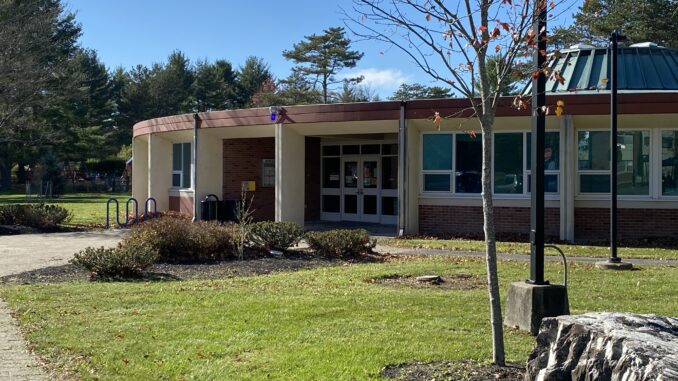
After eight months of living through the COVID-19 pandemic, stress and anxiety is on the rise and are beginning to be the cause for major concern, especially among young adults.
On Oct. 21, Gov. Andrew Cuomo acknowledged how the pandemic has been taxing on the mental health of New Yorkers.
“It is frightening, COVID, and it has caused significant anxiety among many people. I’m telling you from talking to people and hearing their voices and hearing their concerns, we have a serious problem of the emotional stress and anxiety that COVID has caused,” Gov. Cuomo said in a press release. “And the longer it goes on, the worse it is getting.”
Cuomo said that the emotional toll on people is so great that one day mental health professionals will talk about “PTSD from COVID.”
According to a Household Pulse Survey on anxiety and depression during the COVID-19 pandemic, conducted by The Centers for Disease Control, 35.2% of New Yorkers are reporting symptoms of Anxiety Disorder and/or Depressive Disorder.
The study also displays that U.S. citizens aged 18-29 have consistently reported the highest percentage of those experiencing anxiety and depression, compared to other age groups. In the most recent poll, from Sept. 30 to Oct.12, 52.8% of 18-29 year olds reported symptoms of anxiety and depression.
The percentage of those experiencing mental health-related issues decreases as the age group gets older. In the same time period, 43.2% of 30-29 year olds reported symptoms, 39.9% of 40-49 year olds, 34.8% for 50-59 year olds and 29.5% 60-69 year olds.
Many aspects of the pandemic, like self-isolation, uncertainties, financial instability and health concerns, can all play a factor in this mental health crisis.
A study published by the National Library of Medicine outlined how the pandemic was impacting the mental health of college students.
According to the study, out of 2,031 participants, “48.14% showed a moderate-to-severe level of depression, 38.48% showed a moderate-to-severe level of anxiety and 18.04% had suicidal thoughts. A majority of participants indicated that their stress/anxiety levels had increased during the pandemic.”
The Director of the Psychological Counseling Center at SUNY New Paltz, Dr. Gweneth Lloyd, said that the counseling center has not seen an increase in students using the center’s services, rather that there has been an increase in the level of mental illness severity among the students with preexisting mental illnesses.
Lloyd said that this is likely because the pandemic is the first global crisis for college students, whereas generations before experienced events such as 9/11 and even World War II.
“This [pandemic] is like none other, every family is affected in one way or the other. Whether directly someone has experienced the loss of a loved one, they have experienced income loss, you can’t pay your rent, it becomes questionable as to whether [you] can pay for tuition,” Lloyd said. “So it is compounded by many different socio-cultural issues that already existed in our culture that made it particularly difficult for many people, but particularly those working-class families.”
Remote learning is also another stressful obstacle that college students are facing.
Lloyd said that students no longer have quiet places to study, they now may have to help their younger siblings adjust or take care of a family member who is sick. Professors and students are also still adapting to the online environment.
“[Remote learning] was a whole new skill set that students had to master if our generation today are very savvy, but they never had to do it in a super structured way, as a formal class, a curriculum that it will be evaluated all the time,” Lloyd said. “Then you combine it with professors and faculty adjusting to that and executing classes, within those frameworks so there’s a learning curve on both ends.”
“I find myself having to teach myself a lot of the content in my courses,” said Student Association (SA) President Haley Hershenson. “I feel like this semester I’ve had to work harder as a student than Iever have before, and I know many students feel the same.”
Hershenson says that technical difficulties, managing deadlines and not having any breaks this semester are very taxing on her.
In an open letter to faculty from SUNY New Paltz students, published on Oct. 22, the SA outlined many issues that students are facing with remote learning and some suggestions for how these problems can be solved.
“Many students have dramatically different circumstances now than they did before. A lot of us have been forced to live, and now study in a different environment than we were accustomed to. Some who support themselves financially have lost on-campus positions, internships and/or off-campus jobs. Some of us have parents who have been laid off. Some of your students might be sick themselves. Some of us are essential workers. We are all coping in our own ways with the loss of how we envisioned this semester to be,” the letter states.
The letter suggested that professors check-in and create connections with students, be flexible and be kind, as a way to make the online learning environment less stressful.
Lloyd recommended that students who are having trouble coping should do a self-evaluation and figure out what type of learner they are and assess their coping skills. Lloyd also recommended self-care by making sure you get enough sleep and get outside.
Students can contact the Psychological Counseling Center at 845-257-2920 for appointments. The counseling center also can put students in contact with a psychiatrist to get medication if needed, for no fee or copay.

